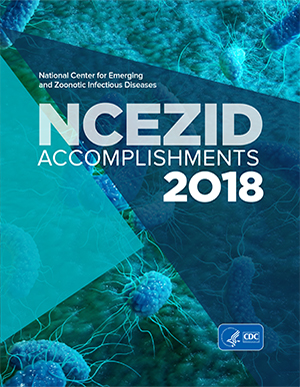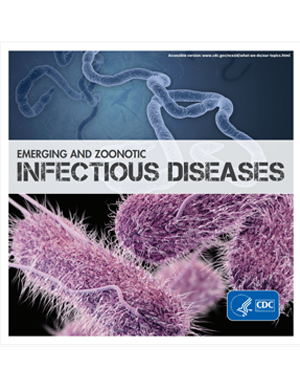NCEZID: Fighting Antibiotic Resistance

Each year in the United States, at least 2 million people become infected with germs that are resistant to antibiotics. Antibiotic resistance happens when germs develop the ability to defeat the drugs designed to kill them. That means the germs are not killed and continue to grow. At least 23,000 people die each year as a direct result of these infections. CDC is a leader in the fight against this global threat. Through its AR Solutions Initiative, CDC works with partners to drive aggressive action and empower the nation to comprehensively respond.
The threat
Since their discovery, antibiotics have transformed the world and increased life expectancy. Infections are a part of the human experience, and we all need antibiotics that work. Moreover, modern healthcare relies on effective antibiotics, which are critical for patients who are at high risk for developing infections, including patients who have surgery, need organ transplants, or receive therapies for cancer. They have been instrumental in combating previously deadly or debilitating illnesses and have saved countless human and animal lives. Yet any time antibiotics are used in people, animals, and crops, they can cause side effects and lead to antibiotic resistance. The resistant infections that emerge can quickly spread throughout communities and around the world.
Some of the current trends in resistance include:
- Patients can get infections when receiving healthcare, called healthcare-associated infections (HAIs). HAIs are commonly caused by antibiotic-resistant germs, which can be difficult to treat and may lead to sepsis or death.
- CDC estimates about 47 million antibiotic courses are prescribed for infections that don’t need antibiotics, like for colds and the flu, in U.S. doctors’ offices and emergency departments each year. That’s about 30% of all antibiotics prescribed. Improving how antibiotics are prescribed and used will help combat antibiotic resistance.
- The American food supply is among the safest in the world, but people can still get sick from foodborne infections or from having contact with food animals. These infections can be caused by antibiotic-resistant germs.
- Germs can spread between people, food, and animals in the community, including at work or school, when traveling, or at home with pets. In addition to HAIs and foodborne infections, these germs can also cause infections like gonorrhea or tuberculosis, which can be resistant to antibiotics.
What we’re doing
CDC’s AR Solutions Initiative invests in national infrastructure to detect, respond, contain, and prevent resistant infections across healthcare settings, food, and communities. Through these investments, CDC is transforming how the nation and world combat and slow antibiotic resistance at all levels.
CDC’s response to antibiotic resistance implements activities outlined in the U.S. National Action Plan for Combating Antibiotic-Resistant Bacteria. In fiscal year 2016, Congress appropriated an unprecedented $160 million of new investments for CDC to fight antibiotic resistance. With these investments, CDC implemented the AR Solutions Initiative to work toward meeting the national goals. This appropriation increased to $163 million in fiscal year 2017, and $168 million in fiscal year 2018.
The AR Investment Map showcases CDC-funded activities in the U.S. and abroad to meet national goals, underlining the agency’s continued commitment to combat antibiotic resistance. This work is done in partnership with state and local public health departments, academia, public health partners, and industry. CDC supports most of these activities through its AR Solutions Initiative, and leverages investments from successful programs across the agency for maximum efficiency.
Find more information on accomplishments and innovations in Antibiotic-Resistant Infections in these publications.


